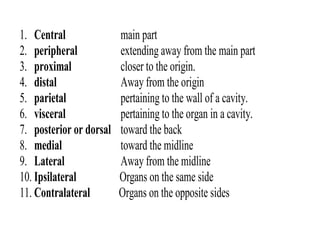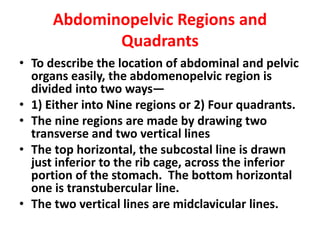This document provides definitions and terminology related to anatomy and physiology. It defines key terms like anatomy, physiology, pathology, etiology, cells, tissues, organs, organ systems, and types of body movement. It also describes the levels of organization in the body from atoms to organ systems. Several anatomical directions, regions, and body cavities are outlined. The relationship between anatomy and physiology is described as anatomy explaining structure and physiology explaining function.





























